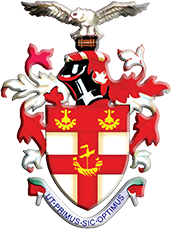Orthoptics Department
Who are we?
Orthoptists work as part of an eye care team at the Sydney Hospital and Sydney Eye Hospital.
The Orthoptist:
- tests and diagnoses eye movement problems
- treats eye movement problems without having to have surgery
What we do
Orthoptists provide a service for both adults and children. They have experience in eye movement disorders and assessing vision.
The orthoptist can:
- diagnose eye movement conditions
- provide treatment that does not involve surgery
- help with rehabilitation of some eye conditions
Orthoptists work with eye doctors to aid in the diagnosis and management of eye diseases and visual problems.
Orthoptists provide a service for patients in the following areas:
- vision and eye movement testing of babies and children
- check the development of vision
- treats reduced vision (amblyopia) in children caused by eye movement problems
- diagnosis, treatment and management of eye movement and vision problems
- visual field testing
- diagnostic testing for eye disease including glaucoma, cataract and retinal diseases
Who we care for
Orthoptists care for patients of all ages, from a few weeks old to the elderly.
How can an orthoptist help me?
The treatment the orthoptist will offer includes: eye patches, eye exercises, prisms or glasses. They will also help you understand your eye condition. They will teach you ways on how to work around your vision, or eye difficulties.
What do I need to bring to my Visual Field appointment?
- bring your most current reading and distance glasses
- a list of any medication that you are taking
- if you have problems understanding English, we can organise an interpreter for you
What is amblyopia?
Amblyopia is a reduction in the vision of one or both eyes due to an interruption to the normal visual development that may occur in the during a child’s visual development. It is important to treat amblyopia, before age seven to gain the best improvement.
What is strabismus/squint?
Strabismus (squint, turn or lazy eye) refers to the problems in the movement of the eyes causing your eyes to look in different directions. A squint may prevent the eyes from working together as a pair (binocular vision) and in some cases can affect eye sight in children.
Can you help me with my double vision?
Diplopia (double vision) can occur for many different reasons, including damage to the nerves that supply the eye muscles and problems with the eye muscles themselves, trauma to the eye muscles just to name a few. Often temporary prisms are fitted to the glasses to relieve diplopia (prism therapy). The orthoptist monitors the prism therapy as diplopia often changes and can improve in some cases.
How do I clean my prism?
Prisms need to be removed from glasses to be cleaned. To clean use warm soapy water then rise the prism with water. Whilst still damp place the smooth side of the prism of the inside of the glasses lens, press the prism down and push out the air bubbles. Allow prism to air dry / dry with kitchen towel. To prevent scratching the prism do not use harsh abrasives or lens cleaner.
What do I do if my double vision has become worse or changed?
If your double vision changes i.e. separation of double image increases, or direction of double vision changes then please contact us or attend the emergency department.
When would I need to see an orthoptist?
We see patients with a wide range of conditions and symptoms affecting their vision including:
- misalignment of the eyes or eye turn (strabismus)
- blurred vision or ghosted images with either eye strain or eye turn
- double vision
- eye movement problems
- oscillating vision or eye movements
During an appointment with an orthoptist, we will check your vision and visual function and depending on the reason for your visit, assess eye alignment, eye movement and ability of the eyes to work together.
We may also discuss the symptoms a person is experiencing to understand their symptoms and how they might be impacting a person’s activities of daily living to offer a range of treatments to manage these symptoms.
Depending on the reason for your visit, we may also need to do other assessments including peripheral vision testing (visual field assessment).
An appointment typically takes 30-90 minutes to allow enough time for the orthoptist to thoroughly examine your condition and develop an appropriate treatment plan if needed.
Often you will also need an appointment with one of our Ophthalmologists or Optometrists to check the health of the inside of your eyes and how your eyes are focusing. This may be on the same day as your Orthoptic appointment or at a later date.
- your appointment letter or appointment card (if you have one)
- current glasses (near and distance) and contact lenses, including any cases, storage containers and solutions
- medicines or eye drops in correctly labelled containers (or a picture of your medications or eye drops) or a letter from your GP listing all your medication
- sunglasses - some patients find these useful if they have had drops put in their eyes
